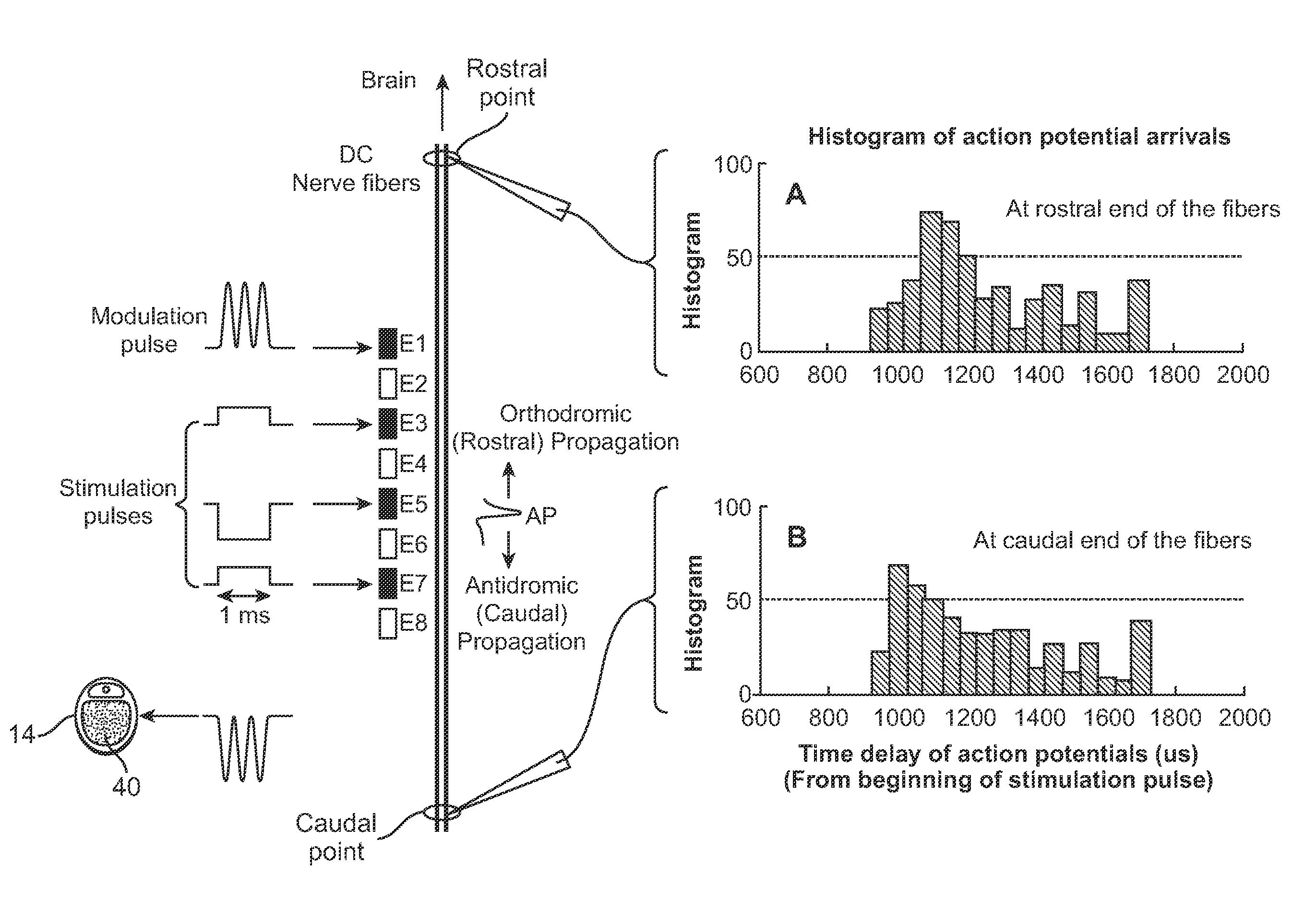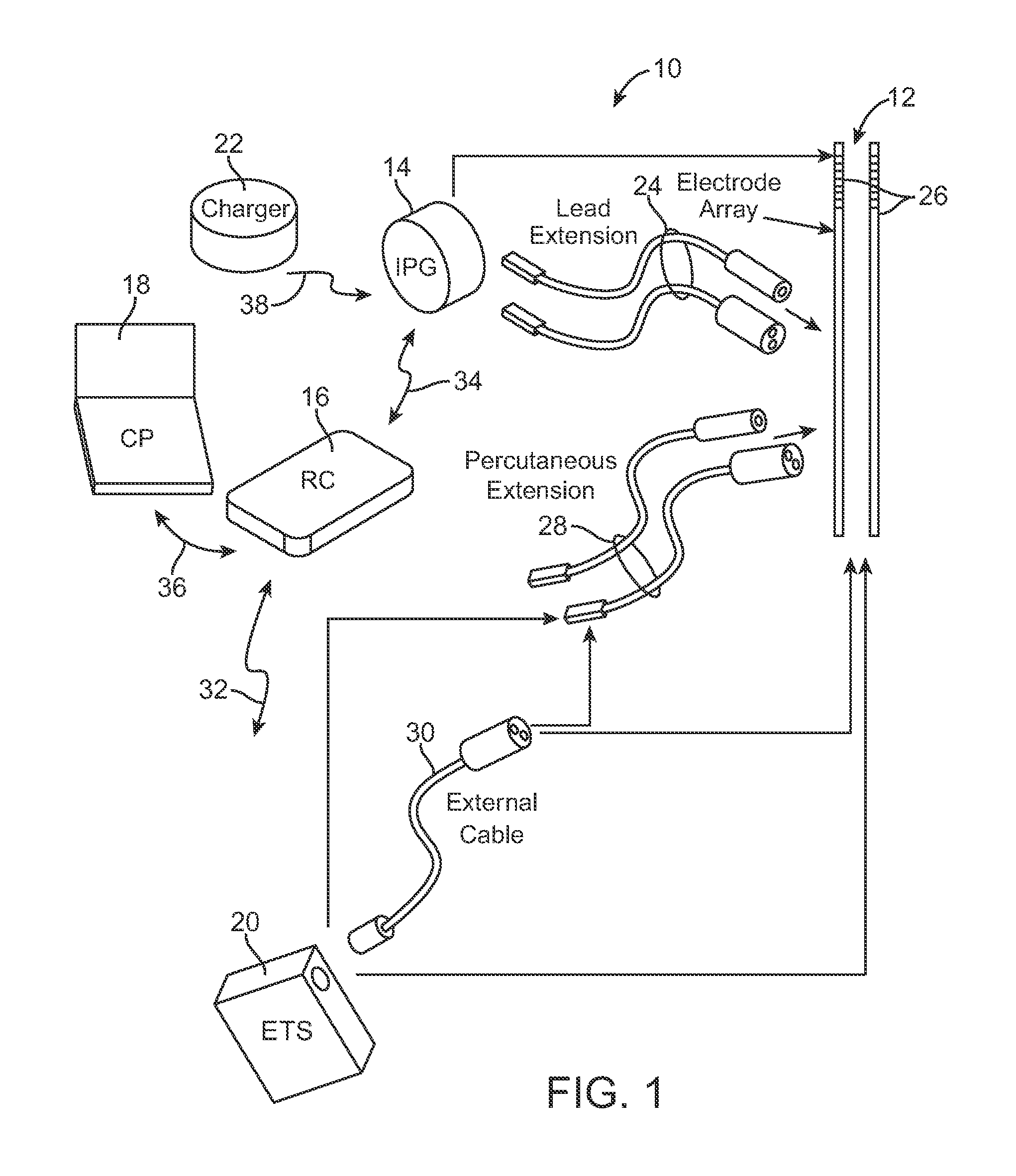System and method for modulating action potential propagation during spinal cord stimulation
a technology of action potential and spinal cord stimulation, applied in the field of tissue stimulation systems, can solve problems such as creating undesirable sensations and other problems
- Summary
- Abstract
- Description
- Claims
- Application Information
AI Technical Summary
Benefits of technology
Problems solved by technology
Method used
Image
Examples
Embodiment Construction
[0035]Turning first to FIG. 1, an exemplary spinal cord stimulation (SCS) system 10 generally includes one or more (in this case, two) implantable stimulation leads 12, a pulse generating device in the form of an implantable pulse generator (IPG) 14, an external control device in the form of a remote controller RC 16, a clinician's programmer (CP) 18, an external trial stimulator (ETS) 20, and an external charger 22.
[0036]The IPG 14 is physically connected via one or more percutaneous lead extensions 24 to the stimulation leads 12, which carry a plurality of electrodes 26 arranged in an array. In the illustrated embodiment, the stimulation leads 12 are percutaneous leads, and to this end, the electrodes 26 are arranged in-line along the stimulation leads 12. In alternative embodiments, the electrodes 26 may be arranged in a two-dimensional pattern on a single paddle lead. As will be described in further detail below, the IPG 14 includes pulse generation circuitry that delivers elect...
PUM
 Login to View More
Login to View More Abstract
Description
Claims
Application Information
 Login to View More
Login to View More - R&D
- Intellectual Property
- Life Sciences
- Materials
- Tech Scout
- Unparalleled Data Quality
- Higher Quality Content
- 60% Fewer Hallucinations
Browse by: Latest US Patents, China's latest patents, Technical Efficacy Thesaurus, Application Domain, Technology Topic, Popular Technical Reports.
© 2025 PatSnap. All rights reserved.Legal|Privacy policy|Modern Slavery Act Transparency Statement|Sitemap|About US| Contact US: help@patsnap.com



